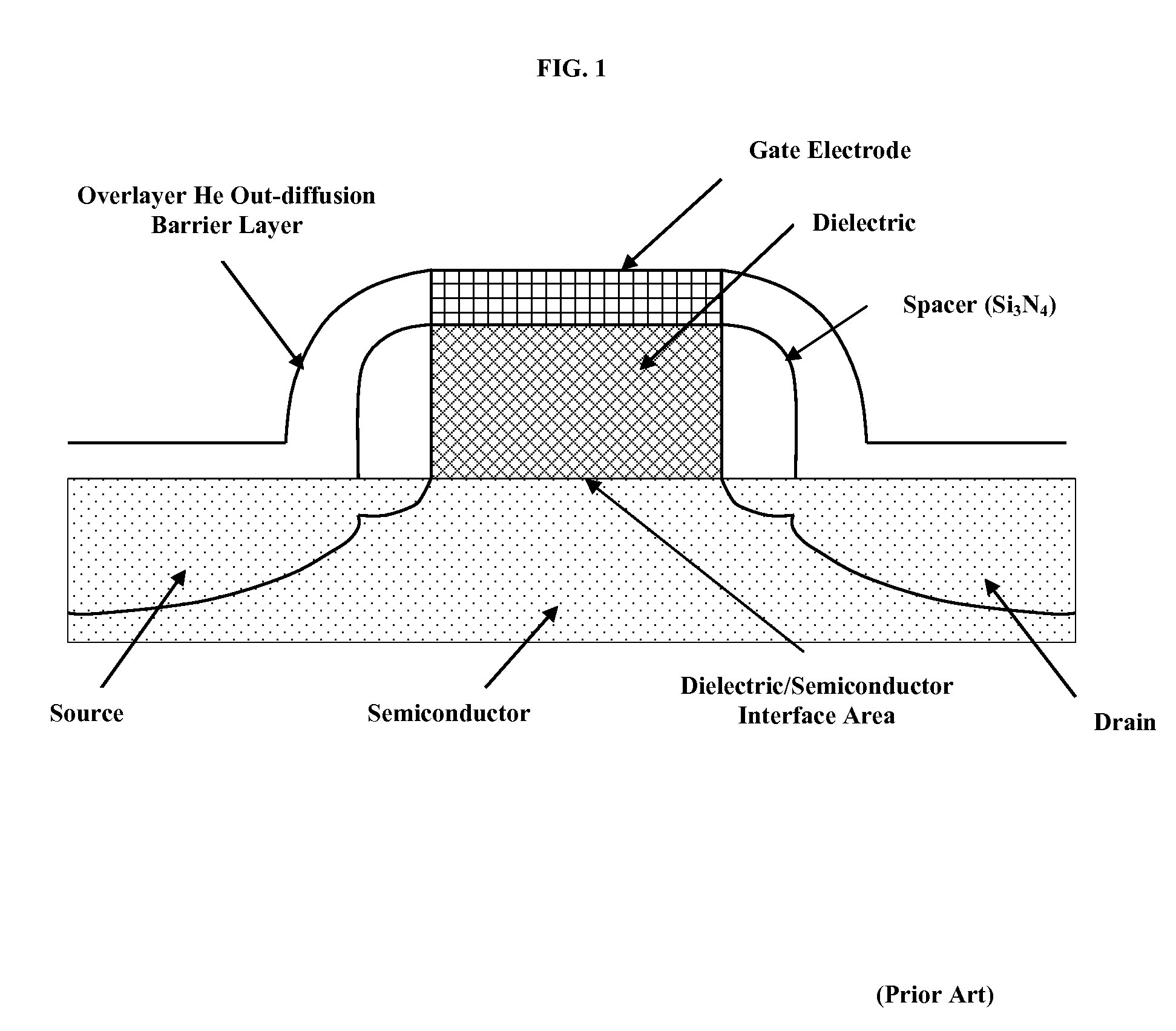Method for reducing device and circuit sensitivity to electrical stress and radiation induced aging
a technology of electrical stress and radiation induced aging, applied in the direction of basic electric elements, semiconductor/solid-state device manufacturing, electric devices, etc., can solve the problems of h or h, deleterious effect etc., to achieve positive bias temperature instability, increase the temperature of device operation, and increase the power consumption
- Summary
- Abstract
- Description
- Claims
- Application Information
AI Technical Summary
Benefits of technology
Problems solved by technology
Method used
Image
Examples
Embodiment Construction
[0017]The mechanisms of aging of the dielectric / semiconductor interface involve de-passivation of the semiconductor-hydrogenous species bond followed by diffusion of the hydrogenous species away from the interface. In the case of irradiation, the fracture of Si—OH bonds and diffusion of H or H+ species through the dielectric network is of primary concern. In both processes involving release of the hydrogenous species it is clear that within some finite time the hydrogenous species must diffuse outside of a “capture radius.” Failing this the species could be re-trapped at the semiconductor ion / atom from which it has escaped. Clearly, if a physical mechanism can be found to reduce the probability that the hydrogenous species can escape the capture radius then the aging mechanism will be suppressed.
[0018]The present invention relies upon the observation that the structure of the dielectric contains substantial densities of interstitial voids and channels through which gases can diffuse...
PUM
| Property | Measurement | Unit |
|---|---|---|
| pressure | aaaaa | aaaaa |
| pressure | aaaaa | aaaaa |
| temperatures | aaaaa | aaaaa |
Abstract
Description
Claims
Application Information
 Login to View More
Login to View More - R&D
- Intellectual Property
- Life Sciences
- Materials
- Tech Scout
- Unparalleled Data Quality
- Higher Quality Content
- 60% Fewer Hallucinations
Browse by: Latest US Patents, China's latest patents, Technical Efficacy Thesaurus, Application Domain, Technology Topic, Popular Technical Reports.
© 2025 PatSnap. All rights reserved.Legal|Privacy policy|Modern Slavery Act Transparency Statement|Sitemap|About US| Contact US: help@patsnap.com

